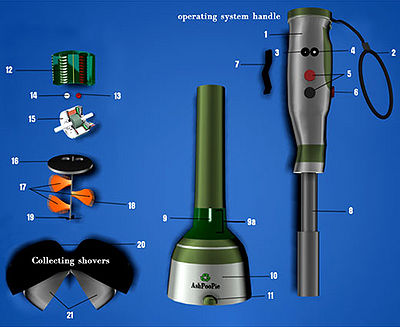 |
A pet and an owner of it form a beautiful bond within themselves. But the problem occurs when they are separated. If you have a pet, you can understand how it feels to be separated from your pet. Once your pet is lost, there is little you can do to find it. Advertising and complaints will not do you much help and you end up finding him/her door to door anyway.
Pet identification
However, there is one possible solution to this miserable situation: pet identification. It can be beneficial making your dog (or any other pet) electronically identifiable even from a distance. This way when your dog is lost, you don’t have to worry about finding it again.
Microchipping and GPS system
There are many identification systems for your dog(s). For example you could use a specially colored or specially knitted collar for him/her. But these homemade methods are often unreliable like in the situation where a dog’s ownership is disputed or you have to identify your dog amidst thousands of dogs in a kennel. Here you can find the use of electronic identifications such as dog Microchipping and a dog GPS microchips. Both are reliable methods of identification having advantages and disadvantages.
Pet Micro chipping to find your dog
A microchip has a size equivalent to that of a grain of rice. It can be injected into the body (recommended site: below the skin at the back of the neck) without an anesthetic and the process is completed. The microchip has a unique number that is noted down in some paperwork and the owner and the dog is free to go. Whenever an owner loses his/her dog, a complaint is lodged along with the identification number and if any veterinary offices and shelters with a scanner come across the dog, the dog is found.
Do they work
The above method of pet GPS microchip does work with a tiny disadvantage. The disadvantage being this way a dog can only be found if it comes in contact with an entity with a scanner. Moreover, depending on the ‘brand’ of microchip used; even ‘universal’ scanners cannot always pick signals up from a latest microchip.
Dog GPS microchips
There is another non-invasive method called dog GPS microchips, which is generally a two part instrument having (generally) a transmitter (such as a machined collar) and a GPS pet tracking device. The ranges of these devices are too wide so that your dog can be detected within seconds indoors or outdoors; irrespective of whether the dog is found by a veterinary office or not and/or whether they have a scanner or not!
A dog GPS microchip is certainly a better idea than a dog micro-chipping because of the wider range and the all-time availability of the former. So if you are an owner, the best thing you can do is, apart from being responsible, is to use a dog GPS from now on.
Related articles:



